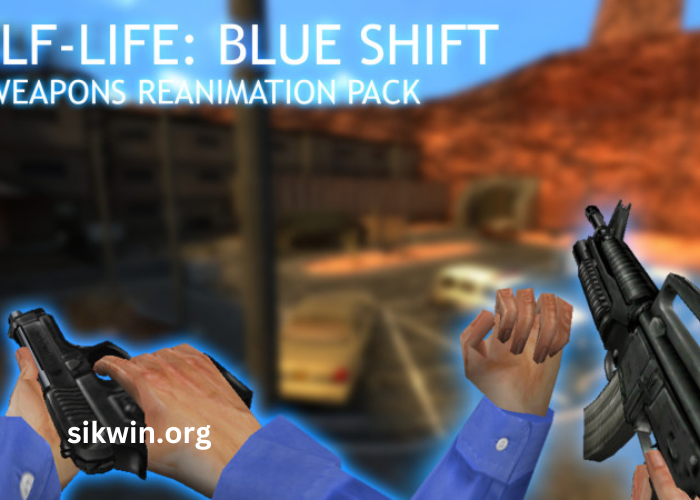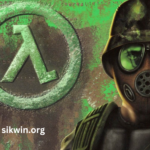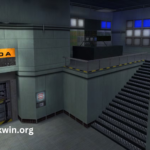In the expansive universe of the Half-Life series,Half-Life: Blue Shift holds a distinctive place as both a narrative and gameplay extension of the original Half-Life. Released in 2001, this expansion introduces players to the perspective of Barney Calhoun, a security guard at the Black Mesa Research Facility. Unlike the renowned scientist Gordon Freeman, who battles aliens and government agents, Calhoun’s journey focuses on his efforts to survive the chaos unleashed during the facility’s catastrophic experiments. This unique viewpoint provides a fresh narrative angle, allowing players to experience the same events from an entirely different perspective.
Half-Life: Blue Shift also emphasizes the atmospheric tension and intricate level design that the series is known for, while integrating new gameplay mechanics that enrich the overall experience. With a commitment to storytelling and immersive environments, this expansion has captivated players since its release. As we delve deeper intoHalf-Life: Blue Shift, we will explore its storyline, gameplay features, character development, and its place within the larger context of the Half-Life franchise.
What is the Storyline of Half-Life: Blue Shift?
The storyline ofHalf-Life: Blue Shift offers a compelling glimpse into the events occurring within the Black Mesa Research Facility from a new character’s perspective. Players take on the role of Barney Calhoun, a security guard who finds himself caught in the chaos following the disastrous resonance cascade that has unleashed alien creatures and military personnel onto the facility. The narrative begins with Calhoun arriving at work, only to be thrust into an emergency situation where he must navigate the perilous environments and ensure his own survival while aiding others where possible.
As the plot unfolds,Half-Life: Blue Shift fills in the gaps left by the original game, revealing how Calhoun experiences the fallout from the experiments that Gordon Freeman unwittingly set into motion. Throughout the game, players encounter familiar locations, providing context for the events that transpired in the originalHalf-Life. The intertwining storylines create a rich tapestry of experiences, enhancing the overall lore of the Half-Life universe.
Barney’s character development is crucial to the narrative ofHalf-Life: Blue Shift. While he begins as a typical security guard focused on self-preservation, his experiences lead him to become more proactive, attempting to rescue scientists and combat the alien forces threatening their lives. This evolution of character reflects the larger themes of responsibility and heroism, showcasing how even ordinary individuals can rise to the occasion in times of crisis.
How Does Gameplay in Half-Life: Blue Shift Differ from Other Titles in the Series?
Gameplay inHalf-Life: Blue Shift retains the core mechanics that made the original Half-Life a landmark title while introducing new elements that distinguish it from its predecessors. One of the most notable differences is the focus on stealth and strategy, as players often find themselves in situations where combat is not the best option. This aspect encourages players to think critically about their approach, emphasizing the importance of stealth over brute force.
As Barney Calhoun, players are equipped primarily with a pistol, which is less powerful than the diverse arsenal available to Gordon Freeman. This limitation necessitates a more tactical style of play, prompting players to conserve ammunition and utilize the environment effectively. The lack of powerful weapons adds an additional layer of tension, as players must navigate encounters with enemies like the headcrabs and soldiers with careful planning.
Furthermore, the level design inHalf-Life: Blue Shift is intricately crafted, offering a mix of familiar environments from the original game while also introducing new areas that expand on the lore of Black Mesa. Players traverse through ventilation shafts, security checkpoints, and laboratories, each filled with environmental storytelling that enhances immersion. The attention to detail in the level design allows players to experience the facility’s atmosphere, capturing the anxiety and danger present in the environment.
The incorporation of puzzles and environmental challenges is another hallmark ofHalf-Life: Blue Shift. While the original game featured a variety of puzzles, this expansion builds on that tradition by integrating new mechanics that require players to manipulate their surroundings creatively. This aspect of gameplay encourages exploration and critical thinking, aligning with the franchise’s emphasis on interactive storytelling.
What New Characters Are Introduced in Half-Life: Blue Shift?
InHalf-Life: Blue Shift, the focus on Barney Calhoun allows players to engage with a different set of characters that enrich the narrative and expand the universe. One of the significant characters introduced is a scientist named Dr. Rosenberg. He serves as a crucial ally for Barney, providing guidance and assistance throughout the game. The dynamic between Barney and Dr. Rosenberg highlights the collaborative efforts of individuals trying to survive the chaos and navigate the perils of the facility.
Dr. Rosenberg’s character embodies the themes of teamwork and survival, as he relies on Barney’s skills to escape the facility safely. This partnership creates a sense of camaraderie that resonates with players, showcasing the human element amidst the horror of the alien invasion. Players witness the challenges faced by scientists during the crisis, emphasizing their vulnerability and the urgency to escape the facility.
Additionally,Half-Life: Blue Shift features various military personnel who serve as antagonists. These soldiers, tasked with eliminating any remaining survivors, add a layer of complexity to the storyline. Unlike the alien creatures that players must battle, the military presents a more organized and tactical threat. The interactions between Barney and these soldiers heighten the tension, forcing players to navigate encounters carefully and make strategic decisions about when to fight or evade.
The introduction of these characters not only enhances the narrative but also emphasizes the broader implications of the Black Mesa incident. Players come to understand the diverse perspectives of those affected by the disaster, enriching the overall storytelling experience inHalf-Life: Blue Shift.
How Does Half-Life: Blue Shift Expand the Half-Life Universe?
Half-Life: Blue Shift serves as an essential expansion to the Half-Life universe, providing players with new insights and context regarding the events at Black Mesa. By exploring the facility through Barney Calhoun’s eyes, players gain a unique perspective on the chaos that ensues following the resonance cascade. This expansion deepens the lore and enriches the overall narrative tapestry of the series.
One significant wayHalf-Life: Blue Shift expands the universe is through its detailed environmental storytelling. As players navigate familiar locations, they encounter remnants of the disaster—abandoned equipment, signs of struggle, and the aftermath of battles fought by other characters. These elements contribute to the immersive atmosphere, allowing players to piece together the events that transpired within the facility. The level design reinforces the interconnectedness of the environments, creating a sense of continuity within the series.
Moreover, the expansion introduces additional lore that enhances the understanding of the Black Mesa Research Facility’s operations. Players learn more about the experiments being conducted, the ethical dilemmas faced by the scientists, and the military’s role in containing the situation. This added depth provides context for the actions of various factions, illustrating the broader consequences of the events that unfold inHalf-Life: Blue Shift.
The inclusion of new characters, such as Dr. Rosenberg, also plays a critical role in expanding the narrative. Their interactions with Barney and the challenges they face together illustrate the human cost of the disaster. By showcasing the experiences of individuals outside the protagonist’s perspective,Half-Life: Blue Shift offers a more comprehensive understanding of the impact of the Black Mesa incident.
What Were the Reception and Impact of Half-Life: Blue Shift?
Upon its release,Half-Life: Blue Shift received generally positive reviews from both critics and players. Many praised the expansion for its ability to provide a fresh perspective on the original game while maintaining the elements that made the series beloved. Reviewers highlighted the engaging gameplay, atmospheric environments, and the narrative depth that Barney Calhoun’s story introduced.
The impact ofHalf-Life: Blue Shift on the gaming community was significant, as it demonstrated the potential for narrative expansions to enrich established universes. Players appreciated the opportunity to explore the same events from a different viewpoint, and this approach has since influenced the design of expansions in various genres. The expansion’s success contributed to the overall reputation of the Half-Life franchise as a pioneering force in storytelling and gameplay mechanics.
Furthermore,Half-Life: Blue Shift helped solidify the significance of character-driven narratives in video games. By focusing on Barney’s journey and his relationships with other characters, the expansion showcased the importance of emotional investment in gaming. This emphasis on character development has since become a hallmark of modern game design, inspiring developers to create more complex and relatable characters in their titles.
The longevity ofHalf-Life: Blue Shift is evident in the continued interest it generates within the gaming community. Fans revisit the expansion to relive Barney Calhoun’s journey, analyze its themes, and discuss its impact on the Half-Life universe. The expansion’s influence can still be felt today, as players seek out immersive experiences that blend engaging storytelling with innovative gameplay mechanics.
How Does Half-Life: Blue Shift Influence Modern Gaming?
The influence ofHalf-Life: Blue Shift on modern gaming is profound, particularly in its approach to narrative design and character development. The expansion showcased the effectiveness of presenting multiple perspectives within a single storyline, allowing players to experience events through different lenses. This technique has since been adopted by many developers, leading to a richer narrative experience in contemporary titles.
Furthermore, the gameplay mechanics introduced inHalf-Life: Blue Shift emphasize the importance of tactical decision-making and environmental interaction. Players are encouraged to think critically about their actions, which aligns with the growing trend in modern gaming to create more immersive and thought-provoking experiences. This shift toward strategic gameplay encourages players to engage with their surroundings and approach challenges with creativity.
The emphasis on character-driven storytelling inHalf-Life: Blue Shift has also set a standard for modern game design. Players increasingly seek narratives that feature relatable characters and emotional depth. The expansion’s focus on Barney Calhoun’s journey reflects the potential for games to explore complex themes of heroism, sacrifice, and survival, influencing how narratives are crafted in contemporary titles.
Moreover,Half-Life: Blue Shift contributed to the development of expansions as vital components of gaming franchises. Its success demonstrated that expansions could enhance and enrich the overall narrative, encouraging developers to create meaningful content that resonates with players. This legacy continues to shape the gaming industry, with developers striving to create expansions that add value to their main titles.
Conclusion
In conclusion,Half-Life: Blue Shift stands as a significant and enriching expansion within the Half-Life universe. By offering a unique perspective on the events of Black Mesa, it enhances the overall narrative while introducing new gameplay mechanics and characters. The impact ofHalf-Life: Blue Shift is felt across the gaming landscape, influencing modern narrative design and gameplay strategies. As players continue to explore the depths of Barney Calhoun’s journey, the legacy ofHalf-Life: Blue Shift remains a vital part of the ongoing evolution of storytelling in video games, ensuring its place in the hearts of fans and the annals of gaming history.




